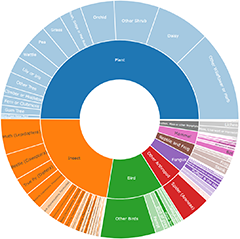Maps
Noctuoid moths (except Arctiinae)
Mount Ainslie to Black Mountain species
Overview
The riparian corridor between Mount Ainslie and Black Mountain represents one of the last remaining green space corridors connecting the major woodland ecosystems of the Inner North. It is also an important area for recreational use.
Moderators
Become the first moderator for Mount Ainslie to Black Mountain
10 species
- Area (hectares) 323.08 ha
- Survey Effort Score (SES) 18.97 sightings per ha
Follow Mount Ainslie to Black Mountain
Receive alerts of new sightings
SubscribeConservation level
- All conservation levels (change?)
Invasiveness
- All invasiveness levels (change?)
Share location
Share link to Mount Ainslie to Black Mountain field guide


































